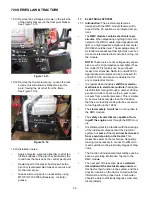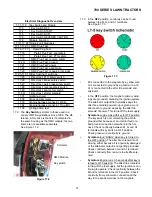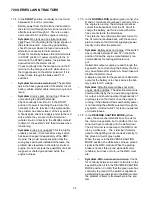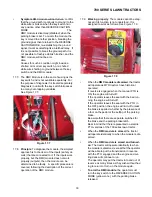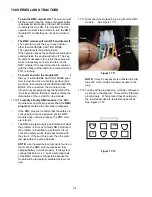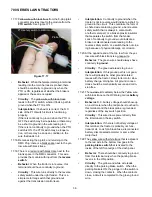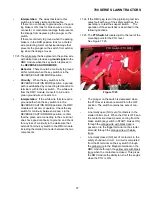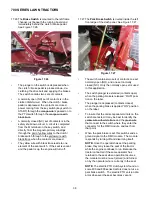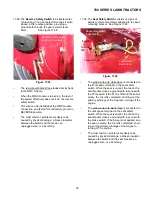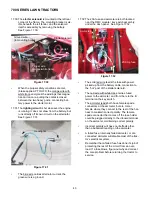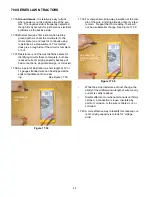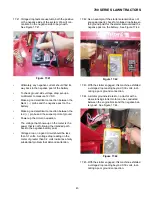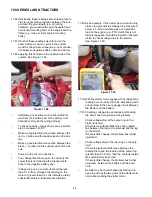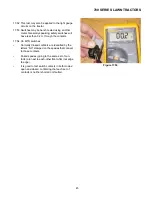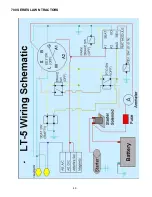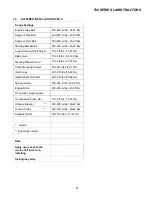
700 SERIES LAWN TRACTORS
44
17.46.Individually, these readings should lead a techni-
cian to inspect the connection between the sole-
noid and the ground path (e.g. mounting
hardware, green wire with eyelet beneath head
of solenoid mounting bolt), or the engine and the
frame (e.g. loose or rusty engine mounting
bolts).
17.47.If both of these readings were found on the
same tractor, a common point in the system
would be the primary suspect (e.g. poor connec-
tion between negative battery cable and frame).
17.48.Applying this principle to the positive side of the
system: See Figure 17.48.
•
Ultimately, any positive current should find its
way from the positive post of the battery to its
destination through the wiring harness.
•
To check hot-side voltage drop: set-up a multim-
eter to measure 12V DC.
•
Make a good electrical connection between the
red ( + ) probe and the positive post on the bat-
tery.
•
Make a good electrical connection between the
black ( - ) probe and the suspect point of the cir-
cuit.
•
Power-up the circuit in question.
•
The voltage that shows-up on the meter is the
power that is not following the intended path
back to the negative battery post.
•
Voltage drop on a good circuit should be less
than 0.1 volts. A voltage drop reading on the
meter of greater than 0.2 volts indicates a fairly
substantial problem that demands attention.
17.49.As an example, if the tractor had a slow-turning
starter, the ground-side voltage drop measured
below 0.1 volts, and there was not a parasitic
load on the engine (e.g. PTO clutch that is not
fully disengaged), it would be logical for the tech-
nician to check voltage drop to the starter.
See Figure 17.49.
17.50.With the starter motor engaged, the voltage drop
reading here is nearly 0.6 volts, indicating a seri-
ous problem in the heavy-gauge circuit between
the starter and the battery.
17.51.Checking voltage-drop at various points along
the circuit can help pin-point the problem.
•
Check voltage-drop at the output lug on the
starter solenoid:
If there is a significant difference, the problem
lies between the lug on the solenoid and the lug
on the starter.
If there is little change, the problem lies further
up-stream.
•
Check voltage drop at the input lug on the sole-
noid:
If there is significant difference between the
reading there and the reading at the output lug
(greater than 0.10 volt), then the contacts inside
the solenoid may be burned.
If there is little change, the problem lies further
up-stream, between the battery and the sole-
noid.
•
Results may be cross-checked by testing volt-
age drop across the two posts of the starter sole-
noid while cranking the starter motor.
Figure 17.48
Figure 17.49
Summary of Contents for 700 Series
Page 2: ......
Page 4: ......
Page 50: ...700 SERIES LAWN TRACTORS 46 ...
Page 52: ...700 SERIES LAWN TRACTORS 48 ...

